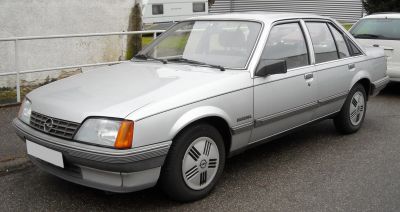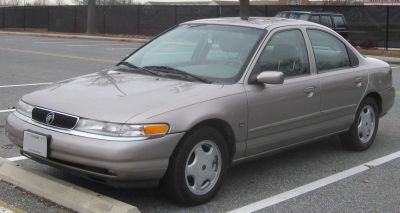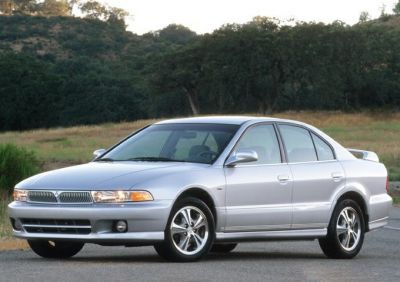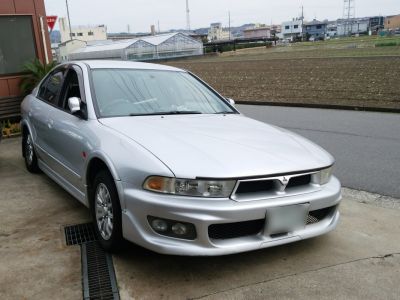 1985 Nissan Skyline VII (R31) Dimensions, Size & Specs
1985 Nissan Skyline VII (R31) Dimensions, Size & SpecsMeasurements of the 1985 Nissan Skyline VII, engineered for optimal performance and comfort
| Dimensions | |
|---|---|
| Length: | 4580 mm180.3 in15.0 ft |
| Width: | 1695 mm66.7 in5.6 ft |
| Height: | 1340 mm52.8 in4.4 ft |
| Weight Specifications | |
| Curb Weight: | 1140-1340 kg2513-2954 lbs |
| Tire Specifications | |
| Tire Sizes: |
|
The Nissan Skyline VII (R31), produced from 1985 to 1995, is a midsize sedan that carries a legacy of performance and style within the Skyline lineup. This generation features a sleek and aerodynamic design characterized by its moderate dimensions, measuring 4580 mm (180.3 inches) in length, 1695 mm (66.7 inches) in width, and 1340 mm (52.8 inches) in height. Weighing between 1140 to 1340 kg (2513 to 2954 lbs), the R31 balances lightweight construction with sturdy build quality, enhancing both efficiency and driving dynamics. The car was equipped with multiple tire sizes, including 165/80 SR14, 205/60 HR15, and 205/55 HR16, optimizing road handling and grip across different trims and driving conditions. Its relatively compact width and lower height compared to many modern sedans give the Skyline VII an agile footprint, while its length ensures comfortable interior space for passengers. Overall, the Nissan Skyline VII (R31) stands as a significant model in automotive history, bridging classic design with evolving technology of the late 1980s and early 1990s, making it a noteworthy option for enthusiasts and collectors looking for reliable performance and timeless style.
Discover the standout features that make the 1985 Nissan Skyline VII a leader in its class
Have a question? Please check our knowledgebase first.
The Nissan Skyline VII (R31) sedan measures 4580 mm (180.3 inches) in length, 1695 mm (66.7 inches) in width, and has a height of 1340 mm (52.8 inches). These dimensions reflect the typical size of a mid-size sedan of its era, offering a balance between spaciousness and maneuverability.
The curb weight of the Nissan Skyline VII (R31) ranges between 1140 kg and 1340 kg (approximately 2513 to 2954 lbs). This moderate weight contributes to a good balance of agility and stability, allowing for responsive handling and decent fuel efficiency for a sedan of its class.
The Skyline VII (R31) came equipped with several tire size options including 165/80 SR14, 205/60 HR15, and 205/55 HR16. Smaller tires like the 165/80 SR14 provide a comfortable ride suited for city driving, while the wider 205 mm tires increase grip and handling on sporty or performance-oriented variants.
Yes, the Nissan Skyline VII (R31), with its length of 4580 mm (180.3 inches), width of 1695 mm (66.7 inches), and height of 1340 mm (52.8 inches), fits comfortably in a standard residential garage. Typical garage dimensions are roughly 2.4 to 2.7 meters wide and 5.5 to 6 meters deep, which provides ample clearance.
At 1695 mm (66.7 inches) wide, the Skyline VII (R31) is relatively narrow compared to modern sedans. This narrower width enhances maneuverability in urban environments and tight parking situations, while still maintaining a stable stance on the road and offering sufficient interior space for passengers.
With a height of 1340 mm (52.8 inches), the Skyline VII (R31) maintains a relatively low profile that contributes to reduced air drag, which can improve fuel efficiency and stability at higher speeds. The lower height also gives the car a sporty silhouette while providing adequate headroom inside.
The Nissan Skyline VII (R31) is slightly larger and more refined than its predecessor, the R30. While the exact measurements of the R30 vary, the R31 generally features a more aerodynamic shape and modest increase in length and width, offering improved handling, interior space, and a more modern appearance overall.
The Skyline VII (R31) fits well within the mid-size sedan category of the 1980s, with dimensions comparable to competitors like the Mazda 626 and Toyota Camry of that era. Its length of 4580 mm and width of 1695 mm provide a competitive balance of passenger space and maneuverability, combining Japanese engineering focus on compactness and performance.
The smaller 165/80 SR14 tires typically offer a softer ride and better fuel economy due to lower rolling resistance, suitable for everyday commuting. The larger 205/60 HR15 and 205/55 HR16 tires prioritise grip and handling, providing sharper cornering and a sportier feel but may slightly decrease fuel efficiency and ride softness due to stiffer sidewalls and wider contact patches.
The Nissan Skyline VII (R31) marked a significant step forward from previous generations by introducing advanced technology and design improvements. It was the last Skyline generation with a fully rear-wheel-drive layout as standard and featured turbocharged engine options, digital dashboards in some trims, and improved aerodynamics. Its stylish yet functional design made it popular among car enthusiasts and those seeking a reliable sport sedan.
Discover similar sized cars.

| Production: | 1977-1985 |
|---|---|
| Model Year: | 1977 |
| Length: | 4630 mm182.3 in |
| Width: | 1740 mm68.5 in |
| Height: | 1380 mm54.3 in |

| Production: | 1982-1986 |
|---|---|
| Model Year: | 1982 |
| Length: | 4652 mm183.1 in |
| Width: | 1726 mm68.0 in |
| Height: | 1420 mm55.9 in |

| Production: | 1989-1993 |
|---|---|
| Model Year: | 1989 |
| Length: | 4580 mm180.3 in |
| Width: | 1695 mm66.7 in |
| Height: | 1340-1360 mm52.8-53.5 in |

| Production: | 1992-1996 |
|---|---|
| Model Year: | 1992 |
| Length: | 4670 mm183.9 in |
| Width: | 1750 mm68.9 in |
| Height: | 1400 mm55.1 in |

| Production: | 1991-1997 |
|---|---|
| Model Year: | 1992 |
| Length: | 4660 mm183.5 in |
| Width: | 1761 mm69.3 in |
| Height: | 1400-1415 mm55.1-55.7 in |

| Production: | 1994-1997 |
|---|---|
| Model Year: | 1995 |
| Length: | 4660 mm183.5 in |
| Width: | 1760 mm69.3 in |
| Height: | 1380 mm54.3 in |

| Production: | 1996-2002 |
|---|---|
| Model Year: | 1996 |
| Length: | 4630-4770 mm182.3-187.8 in |
| Width: | 1740 mm68.5 in |
| Height: | 1420 mm55.9 in |

| Production: | 1997-2002 |
|---|---|
| Model Year: | 1998 |
| Length: | 4660 mm183.5 in |
| Width: | 1740 mm68.5 in |
| Height: | 1420 mm55.9 in |
